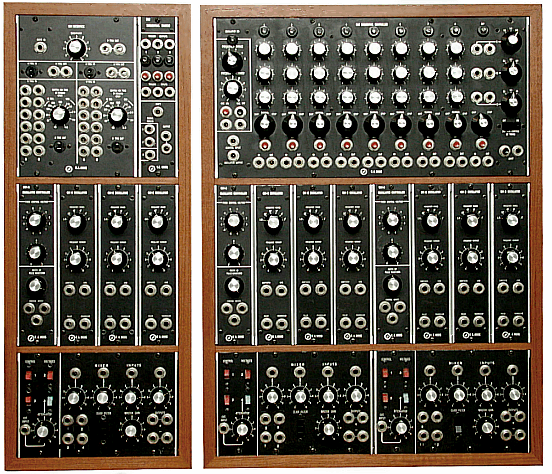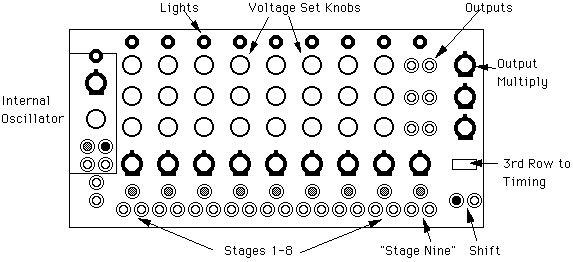 Emulation of the Moog Sequencer
Emulation of the Moog Sequencer Emulation of the Moog Sequencer
Emulation of the Moog Sequencer
A befriended composer and teacher electronic music once stated the Moog sequencer Module 960 can't be eluminate on the Nord Modular.
Never make such a statement in front of Kees van der Maarel. He'll put on white gloves, a rule working with artifacts in the Gemeentemuseum The Hague, and will study all settings throughfully.
The Moog sequencer has the abilty to set the duration of the pulses. This is done by the third row of knobs.

(photo Gemeentemuseum Den Haag)
The Moog 960 Sequential Controller

The sequencer provides a series of control voltages. One of the eight stages is active at a time, as indicated by the lights across the top. When the shift input is pulsed, or the internal oscillator fires, the next (right) stage is activated. A press on the Shift button will also step the sequence.
Each stage is a column of three knobs, two jacks and some switches. When a stage is active, its knobs determine the voltage at the output jacks toward the right side of the panel. For each of the three rows of knobs there is a pair of jacks and a switch that multiplies the output times 1, 2 or 4. The maximum output is 8 volts.
(text University of California, Santa Cruz)
So let's keep Kees working in peace for a while...

and here's the result...
The timing of the sequencer is done by the LFO at the right. The rate of the clock pulse is set by the sequencer "Row of Timing"